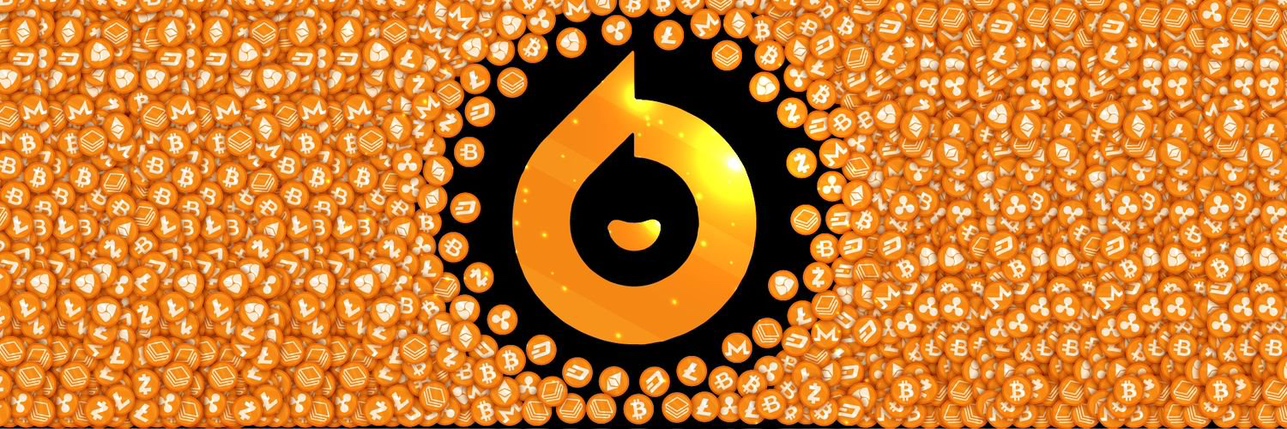What Is Boundless (ZKC)
⸻
What Is Boundless (ZKC)
Boundless is a universal zero-knowledge (ZK) compute marketplace protocol built by RISC Zero. It aims to let any blockchain, rollup, or app offload heavy computation (especially proofs) to a decentralized network of provers, rather than making each chain or app build its own proving infrastructure. 
The idea is that instead of every node re-executing everything, you’d generate a ZK proof that something was done correctly, then verify that proof on-chain. This can improve scalability, reduce redundancy, and potentially lower cost and latency. 
⸻
Recent Developments & Status
Here are some of the more recent and important updates about Boundless:
• In July 2025, the incentivized testnet (also called Mainnet Beta) was launched on Base (Coinbase’s Layer-2 network). 
• Early institutional support has been reported from parties like the Ethereum Foundation, Wormhole, and EigenLayer. 
• Through the testnet program, participants who run proof generation / verification (provers) can qualify for early token allocation (airdrops) of ZKC based on metrics like number, speed, and complexity of proofs. 
• Boundless plans to officially launch mainnet (and the ZKC token) in Q3 2025. 
⸻
Architecture, Mechanism & Unique Features
Boundless has some technical and design features that distinguish it:
1. Proof of Verifiable Work (PoVW)
This mechanism rewards provers for doing useful ZK work (proof generation / verification), rather than wasted computation. The system evaluates tasks based on speed, complexity, etc., and rewards accordingly. 
2. Decentralized ZK Compute Marketplace
Developers (or applications) submit proof requests. Independent prover nodes bid on executing these tasks. They stake collateral (to ensure reliability), then generate proofs which other systems can verify. This can be seen as a supply/demand market for ZK compute. 
3. Cross-chain / Layer-agnostic Verification
Boundless is intended to work across multiple blockchains. Proofs generated via the Boundless network can in principle be verified on various chains, enabling interoperability of compute, verification, and proof-based services. 
4. Supporting Tools & Modules
• OP Kailua: A suite designed to help rollups built with OP Stack (Optimism Stack) shift from traditional optimistic/fault proof models toward using zero-knowledge fault proofs or hybrid ZK approaches. It reduces dispute resolution time and collateral cost while maintaining compatibility. 
• zkVM & Steel, etc.: Boundless builds on top of RISC Zero’s zkVM, and is part of a broader product stack (with Steel, etc.) that aims to offload complex logic, enable better proof performance, etc. 
⸻
Token & Economics
Here are what is known (or commonly reported) about ZKC:
• Total supply is 1 billion ZKC. 
• Token roles include: rewards for provers under PoVW, staking / collateral for provers (to ensure proof delivery), governance, and potentially other roles like fees, marketplace payments, etc. 
• Airdrops / early allocations are scheduled (or have been scheduled) for testnet‐participation, proving, etc. 
⸻
Use-Cases & Implications
Boundless could enable several important applications or shifts in blockchain infrastructure:
• Scalability for Rollups & Layer 1s: Chains that currently struggle with high gas costs, slow finality, or large state size could offload heavy computation / proof work.
• Cross-chain bridges & interoperability: Proofs of state or execution from one chain verified on another could reduce dependency on trust.
• Privacy & Confidential Computation: Some apps requiring private computation might benefit (if proofs can hide information).
• Computation-heavy applications: AI inference/training, cryptographic verification, or anything with heavy compute that would otherwise be expensive on chain.
⸻
Challenges & Potential Risks
Of course, some open questions and risks remain:
• Proof generation cost & latency: Even with optimizations, ZK proofs (especially large or complex ones) take time, computational resources. How low can proof time/cost go in real use?
• Security & correctness: Bugs in proof circuits, staking/collateral logic, or incentive mechanisms can have big consequences.
• Adoption: Projects may be reluctant to integrate a third-party proving market; compatibility, developer tooling, trust, and ecosystem support all matter.
• Token economics: How much is staked vs circulating, inflation, reward curves—all can affect token value, miner behavior, and security.
• Competition: There are many projects in the ZK / proving space; Boundless will need to compete on performance, cost, developer experience, and reliability.
⸻
Outlook: What to Watch For
Here are some things to watch to see how Boundless develops:
• Real metrics from testnet / mainnet: e.g. number of proofs per day, proof latency, participation of provers, hardware diversity (GPUs, etc.).
• Price and market behavior of ZKC once listed, how much gets locked vs circulating.
• Integrations: Which rollups, chains, or apps start using Boundless; how easily.
• How modules like OP Kailua perform in real settings (fault resolution times, gas savings).
• Any security audits, exploit reports, or performance bottlenecks.
⸻
Conclusion
Boundless (ZKC) is an ambitious project pushing toward a more modular, efficient, and interoperable blockchain ecosystem by making zero-knowledge proofs a shared utility. Its model of Proof of Verifiable Work, decentralized provers, and cross-chain verification aims to reduce duplication and increase scalability. If it succeeds in delivering good performance, adoption, and security, it could become a foundational layer for many blockchains. But the path is non-trivial: technical, economic, and adoption challenges remain.
$ZKC
Boundless (ZKC) Crypto Analysis: Fundamental Insights, Technical Breakdown, and a $750 Trade Plan!!!
Fundamental Analysis of Boundless (ZKC).
$ZKC
Boundless (ZKC) is a universal zero-knowledge (ZK) protocol developed by RISC Zero, the creators of the first RISC-V general-purpose zero-knowledge virtual machine (zkVM).
Launched on September 15, 2025, it functions as a decentralized proving layer that enables ZK proofs for any blockchain or rollup, offloading heavy computations to a network of independent prover nodes.
This shifts blockchain verification from full re-execution to proof-based checks, enhancing scalability, interoperability, and efficiency without requiring changes to existing networks.
The protocol addresses core blockchain limitations like high costs and slow speeds by introducing Proof of Verifiable Work (PoVW), where provers earn ZKC rewards for generating useful proofs that power L1s, L2s, bridges, DeFi apps, and more.
Key strengths include its multi-chain compatibility decentralized governance via ZKC staking, and an incentive model that turns computation into economic value.
The project has strong backing, having raised $13.7M in a public sale at a $290M fully diluted valuation (FDV).
Listings on major exchanges Bitget.
Partnerships aren't explicitly detailed, but integrations with ecosystems like Base Mainnet Beta and tools like Steel (for Solidity gas savings) and Kailua (for fast finality) indicate ecosystem traction.
Tokenomics:
Genesis Supply: 1B ZKC.
Circulating Supply: ~200.93M (20.09% of genesis).
Max Supply: Infinite (inflationary model).
Inflation Rate: Starts at 7% in year 1, tapering to 3% by year 8 to reward network growth.
Utility: ZKC is used for staking (to signal prover capacity and governance), collateral (provers lock ~10x proof fees to prevent censorship), rewards (via PoVW for proof generation), and fees.
Allocation: Not fully broken down publicly, but includes public sale, airdrops, and emissions for provers.
Current metrics;
Price: ~$1.19 (highly volatile, with screenshot showing ~$1.13–1.16).
Market Cap: ~$240–257M.
FDV: ~$1.19–1.27B.
24h Volume: ~$461M (191% of market cap, indicating extreme liquidity and trader interest typical for a new launch).
24h Change: +1,700–1,800% (from low ~$0.06), reflecting launch pump.
ATH: $2.13 (today, -44% from current).
ATL: $1.19 (today, +1% from current).
Fundamentally, ZKC has solid tech in the growing ZK narrative (competing with zkSync, Starknet), but as a new token, it faces risks like inflation dilution, dependency on prover adoption, and market hype fading.
High volume suggests strong short-term interest, but sustainability depends on real-world ZK usage growth.
Overall rating: Bullish on tech potential, neutral on immediate stability due to launch volatility.
Technical Analysis
5-minute chart shows ZKC's price action shortly after launch, capturing a classic new-token pump-and-correction cycle.
Price opened around $0.06 at ~19:00 UTC, surged parabolically to a high of $1.774, then retraced to ~$1.169 by ~20:10.
This represents extreme volatility, with the +1,700% gain driven by launch listings and airdrop hype, followed by profit-taking.
Key indicators:
Moving Averages (MAs): Price is below MA5 (1.175), MA10 (1.193), and MA20 (1.268), signaling short-term bearish momentum.
Crossovers show MAs converging downward.
Exponential Moving Averages (EMAs): Similar bearish tilt, with price under EMA5 (1.178), EMA10 (1.199), and EMA20 (1.229).
Bollinger Bands: Price is hugging the lower band (LB: 1.079, UB: 1.457), indicating oversold conditions and potential for a bounce, but expansion shows high volatility.
Parabolic SAR: At 0.536 (below price), suggesting the uptrend may resume if support holds.
Volume: Peaked at 97K (MA5) during the pump, then declined to ~28K, with bars shifting from green (buying) to red (selling).
This implies fading buying pressure.
Relative Strength Index (RSI): overbought (>70) at peak, now approaching oversold (<30).
Other: SAR (0.02, 0.2) trails below, supportive; overall sentiment is corrective after euphoria.
Support levels: $1.08 (lower Bollinger), $0.53 (SAR).
Resistance: $1.46 (upper Bollinger), $1.77 (recent high).
The chart reflects high-risk, high-reward dynamics strong for scalpers, but beware of further dumps in illiquid periods.
Chart Pattern Analysis
Parabolic Rise: The initial surge forms a steep ascending curve, typical of launch pumps fueled by FOMO.
No clear channel, but the spike resembles a "blow-off top" where volume peaks and exhausts buyers.
Retracement Wave: Post-peak, a descending triangle or flag pattern emerges, with lower highs and flat support around $1.08–1.20.
This could resolve bullish (continuation) or bearish (breakdown).
Head and Shoulders (Emerging): Possible inverse at the bottom (pre-pump) or standard at the top left shoulder at $1.50, head at $1.77, right shoulder forming at ~$1.40.
If confirmed, targets $0.80 downside.
Overall: No long-term patterns due to short history; it's a volatility-driven "V-shaped" recovery attempt after the spike.
Bullish if it holds above $1.08; bearish below signals deeper correction to $0.50–0.60.
K-Line (Candlestick) Analysis
The 5m K-lines show aggressive momentum shifts:
Early Phase (19:00–19:30): Small-bodied doji and spinning tops around $0.06–0.20, indicating indecision before breakout.
Low wicks suggest minimal selling.
Pump Phase (19:30–20:00): Large green marubozu candles (full bodies, no shadows) drive the surge to $1.77, with increasing volume. This screams strong buying dominance.
Peak (20:00): Shooting star or hammer at high long upper wick, small body signals reversal as sellers enter.
Correction Phase (20:00–20:10): Bearish engulfing patterns (red candle body covers prior green), with long lower wicks showing dip-buying attempts. Volume drops, confirming weakening bulls.
Trends: Upper shadows dominate at top (resistance), lower shadows in pullback (support tests).
Overall, bullish harami or three white soldiers in upmove; bearish three black crows in downmove.
K-Line Pattern Analysis
Bullish Patterns: Morning star at early lows (pre-pump reversal); bullish engulfing during initial climb.
Bearish Patterns: Evening star or dark cloud cover at peak; hanging man confirming top.
Neutral/Reversal: Multiple dojis in correction phase suggest equilibrium—watch for breakout.
No complex patterns like three-line strike due to short data.
Implications: Patterns point to exhaustion after pump; potential for bullish continuation if a hammer forms at support, or bearish if piercing line fails.
Trade Plan for $750 (Professional Trader Level)
Market Situation: ZKC is in a post-launch correction amid extreme volatility (158% 24h vol/mcap).
Fundamentals are promising for ZK growth, but technicals show short-term bearish bias with oversold signals.
Risk is high—avoid if risk-averse.
This plan assumes spot trading on an exchange like Bitget (low fees, high liquidity).
Not financial advice; use stop-losses. Allocate conservatively: Max 50% of $750 ($375) to one position to manage risk (1-2% portfolio per trade rule).
Strategy: Dip Buy Swing Trade (Bullish Bias) – Capitalize on potential bounce from oversold levels, targeting ATH retest. If bearish, pivot to short (futures if available).
Entry:
Buy at support: $1.10–1.15 (near ATL/lower Bollinger). Wait for bullish candle confirmation (e.g., hammer on 5m/15m).
Position Size: $375 (50% of capital) for ~320 ZKC at $1.15 avg.
Remaining $375 in USDT for averaging down or exit.
Stop-Loss:
Set at $1.05 (below lower Bollinger/SAR, -8.7% risk). Protects against dump; max loss ~$33.
Take-Profit Targets:
TP1: $1.40 (resistance, +21.7% gain) – Sell 40% (~$180 profit).
TP2: $1.60 (MA20 level) – Sell 30% (~$105 profit).
TP3: $1.80 (near ATH) – Sell remaining (~$120 profit).
Trailing stop: Move to breakeven after +10%, trail by 5% ATR.
Risk Management:
Risk/Reward: 1:3 minimum (e.g., 8% downside vs. 50%+ upside).
Timeframe: 1-4 hours (scalp/swing); exit if no bounce by EOD.
Monitor: Volume spike for entry; watch X/Binance announcements for catalysts.
Alternatives: If breaks $1.05, short to $0.80 (futures, 5x leverage max, $150 position).
Expected Outcome: If bounces, ~$405 profit (54% ROI on position).
If stops hit, -$33 loss (4.4% of capital). Adjust based on real-time data; diversify if holding longer.$ZKC
What is Boundless ($ZKC)? The Universal ZK Infrastructure
The crypto space has a new name making waves: Boundless ( $ZKC ). Built by the RISC Zero team, it’s a proving layer that lets blockchains borrow the power of zero-knowledge proofs without the heavy lifting. Think of it as a shared engine that helps different networks run faster, cheaper, and with more security. After its big debut on Binance, ZKC is quickly turning heads and could play a key role in how blockchain scales in the years ahead.
What is Boundless?
Boundless is one of the newest players shaking up blockchain infrastructure. It comes from the minds at RISC Zero, the folks who built the world’s first zkVM on RISC-V. At its heart, Boundless is meant to be a kind of universal plug-in layer. Instead of every blockchain or rollup trying to build its own complicated system, they can tap into Boundless and use zero-knowledge proofs out of the box. The idea is simple but powerful: make blockchains run faster, cut costs, and boost security, without forcing developers to start from scratch.
The Problem Boundless Wants to Solve
Think of today’s blockchains like a city with only one main road. Every car, bus, and truck, every transaction, has to squeeze onto that street. Traffic slows, fuel burns, and when activity spikes, the tolls (gas fees) shoot up. Scaling solutions often split people into separate neighborhoods, breaking the sense of a shared ecosystem.
Boundless takes a different path. It shifts the heavy calculations off-chain, hands the work to specialized “provers,” and then brings back a short proof that everything was done correctly. The blockchain doesn’t bother redoing all the math—it just glances at the proof, the way you’d check a receipt at the store. Quick, simple, and enough to keep the whole system lean, fast, and safe.
Key Features of the Boundless Protocol
What makes Boundless stand out?
First, it’s universal—a proving layer that works with many blockchains, not just one.
Second, it runs on a system called Proof of Verifiable Work (PoVW), which rewards provers only when they deliver useful work, unlike the energy-draining Proof of Work model.
Third, Boundless runs with independent prover nodes who stake ZKC tokens as collateral, making the system both decentralized and accountable.
Finally, it’s interoperable, meaning it can connect seamlessly with big ecosystems like Ethereum, BNB Chain, and future rollups that need a plug-and-play ZK engine.
How Does Boundless Work?
Picture blockchain like a courtroom. Instead of making every juror grind through the same long puzzle, one expert is sent outside to solve it. They come back with a short, stamped certificate that says, “Yep, it’s correct.” That’s the Boundless trick.
The heavy math gets pushed off-chain to special prover nodes. They do the hard lifting with zkVM, create the proof, and drop it back on-chain. Anyone can check it in a blink, no need to redo the work. To keep things fair, provers have to put some ZKC on the line. Cheat, and you lose your stake.
Now comes the secret sauce: Proof of Verifiable Work (PoVW). In old-school mining, machines spit out endless hashes that don’t actually help anyone. Here, provers earn ZKC only by creating proofs that matter—proofs other blockchains and apps can use. The more work they take on, the more ZKC they have to stake. And because rewards are up for grabs, provers race to be faster, sharper, and better.
It’s a loop that feeds itself: If there are more proofs, there will be more ZKC staked. We should see more competition between validators, which leads to a better performance for the network effect. And unlike wasted electricity in Proof of Work, every bit of effort here fuels something real. Proofs that speed up Ethereum, secure Bitcoin, connect Solana, or power the next wave of apps. Boundless turns raw computing power into building blocks that the whole crypto world can use.

 Prix le plus bas
Prix le plus bas Prix le plus élevé
Prix le plus élevé 
















